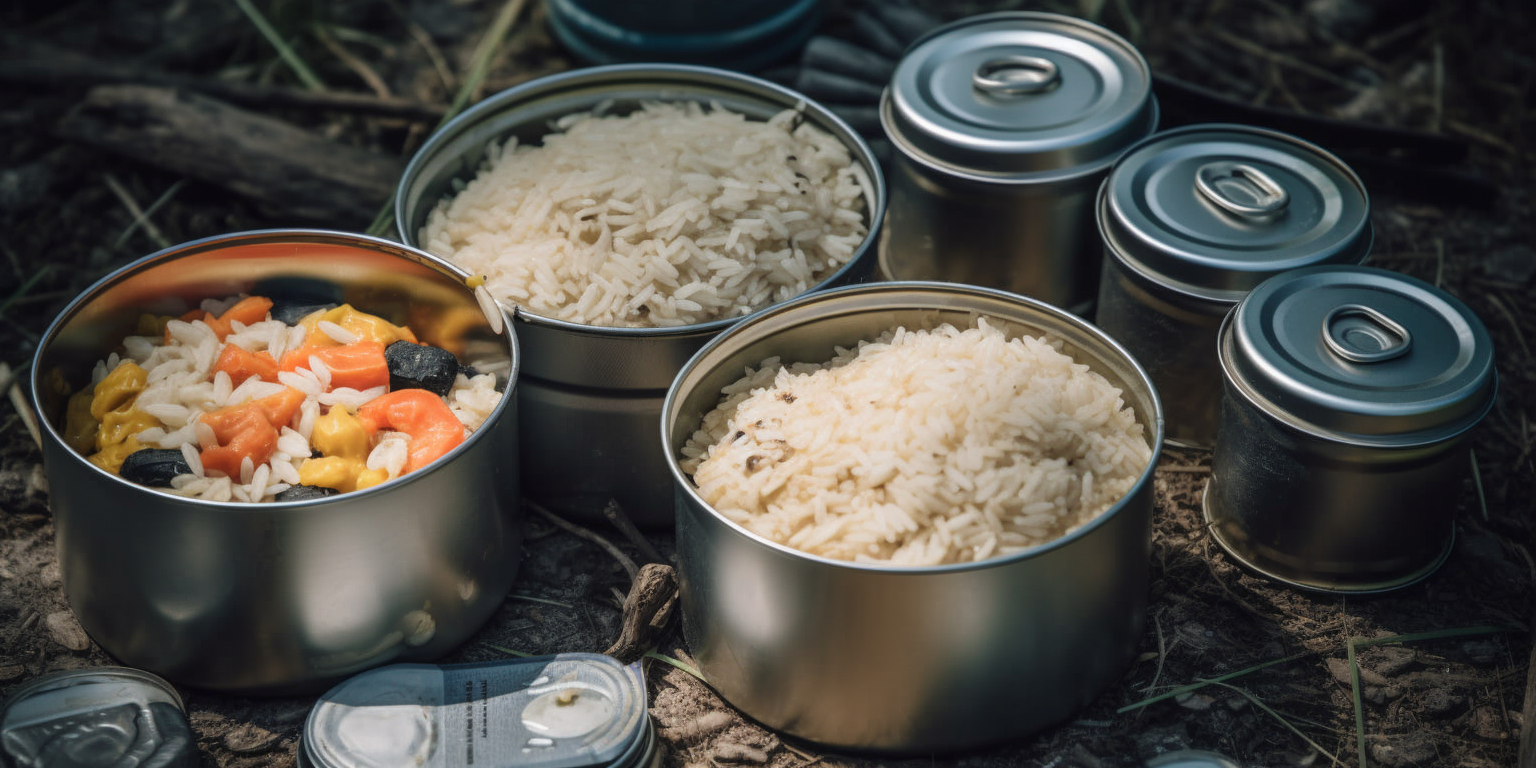
The Pros and Cons of Freeze-Dried vs. Dehydrated Emergency Food
The Pros and Cons of Freeze-Dried vs. Dehydrated Emergency Food
Introduction: The Importance of Emergency Food
In an emergency situation, having access to food can mean the difference between life and death. Whether you're facing a natural disaster, a power outage, or a local emergency, having a supply of emergency food on hand can provide a sense of security and peace of mind. But what type of emergency food is best? In this article, we'll compare the pros and cons of freeze-dried and dehydrated emergency food to help you make an informed decision.
What is Freeze-Dried Food?
Freeze-drying is a method of food preservation that involves removing approximately 98-99% of the moisture from the food by freezing it and then subjecting it to a vacuum. This process preserves the food's nutritional content and flavour, and makes it lightweight and easy to store.
The Pros of Freeze-Dried Emergency Food
- Nutritional Value and Taste - Freeze-dried food retains its nutritional value better than dehydrated food, because it is exposed to less heat during the preservation process. Freeze-drying also preserves the food's flavour, texture, and appearance, so it tastes more like fresh food.
- Lightweight and Easy to Store - Freeze-dried food is extremely lightweight and compact, making it ideal for emergency situations where space and weight are at a premium. It can be stored in a backpack or other small space, and doesn't take up much room in a pantry or emergency kit.
- Long Shelf Life - Freeze-dried food has a very long shelf life, ranging from 25 to 30 years in some cases. This means that you can store it for long periods of time without worrying about spoilage or expiration.
The Cons of Freeze-Dried Emergency Food
- More Expensive than Dehydrated Food - One of the downsides of freeze-dried food is that it is more expensive than dehydrated food. This is because the freeze-drying process is more complex and time-consuming than the dehydration process, and requires more expensive equipment.
- Requires Slightly More Preparation Time, Heat and Water Availability - Freeze-dried food requires more preparation time and resources than dehydrated food, because it needs to be rehydrated before it can be eaten. This means that you'll need to have access to water and a heat source to prepare it, which may not be possible in all emergency situations.
What is Dehydrated Food?
Dehydration is a method of food preservation that involves removing approximately 90% of the moisture from the food by exposing it to heat. This process extends the food's shelf life and makes it more compact and lightweight.
The Pros of Dehydrated Emergency Food
- Affordable - Dehydrated food is generally more affordable than freeze-dried food, because the dehydration process is less complex and requires less expensive equipment. This makes it an attractive option for those on a budget.
- Easy to Prepare and Rehydrate - Dehydrated food is very easy to prepare and rehydrate, because it doesn't require any special equipment or preparation. All you need to do is add water and wait for the food to rehydrate, which makes it ideal for emergency situations where time and resources are limited.
- Can be Made at Home with a Dehydrator - Dehydrated food can be made at home with a dehydrator, which makes it a popular choice for those who want to prepare their own emergency food supply. This also allows you to control the ingredients and ensure that the food is fresh and nutritious.
The Cons of Dehydrated Emergency Food
- Can Have Lower Nutritional Value and Taste - Dehydrated food can have lower nutritional value and taste than freeze-dried food, because the dehydration process can destroy some of the food's nutrients and alter its flavour. This means that dehydrated food may not be as satisfying to eat as freeze-dried food.
- Can be Bulkier and Harder to Store - Dehydrated food can take up more space than freeze-dried food, because it retains some of its original volume. This can make it harder to store in small spaces, and may not be as convenient for emergency situations where space is limited.
- Shorter Shelf Life than Freeze-Dried Food - Dehydrated food has a shorter shelf life than freeze-dried food, typically lasting between 1 to 3 years. This means that it needs to be rotated and replaced more frequently than freeze-dried food.
Conclusion: Which Type of Emergency Food is Right for You?
Both freeze-dried and dehydrated emergency food have their pros and cons, and the right choice depends on your individual needs and situation. If you're looking for a lightweight, long-lasting option with high nutritional value and taste, freeze-dried food may be the way to go. If you're on a budget and want something that's easy to prepare and store, dehydrated food may be a better option.
In either case, it's important to do your research and choose a reputable brand that you can trust. Look for products that have been tested and certified for quality and safety, and check the expiration date before you buy.
Finally, remember that emergency food is just one part of a comprehensive emergency preparedness plan. Be sure to also stock up on other essentials like water, first aid supplies, water and key equipment.
Suggested Articles
Cooking with Freeze-Dried Foods: Creative Recipes for Camping and Emergency Situations
Freeze-dried foods have revolutionized the way we approach cooking in outdoor and emergency scenarios. These lightwei...
The Incredible Benefits of Freeze Dried Food
It preserves food for long periods without the need for refrigeration. Freeze drying is a process that removes moistu...




